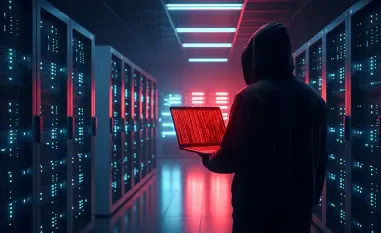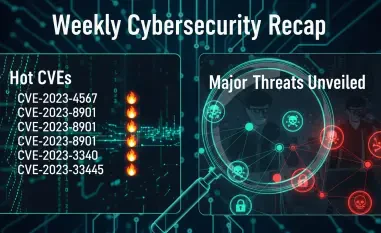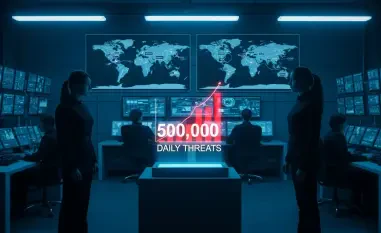In an era where digital battlegrounds are as critical as physical ones, the U.S. Department of Defense has made a bold and somewhat controversial decision to scale back mandatory cybersecurity training for military personnel, redirecting focus toward mission-critical operations. This policy shift, driven by the need to streamline efforts amid escalating global tensions, underscores a profound tension between maintaining robust digital defenses and ensuring operational agility. As cyber threats from sophisticated adversaries grow in complexity, the military is banking on advanced automation and real-time monitoring systems to fill the gap left by reduced human training. This move raises pressing questions about whether technology alone can safeguard national security or if this pivot might expose unforeseen vulnerabilities in an increasingly interconnected warfare landscape.
Evolving Priorities in Military Strategy
Balancing Operational Focus with Digital Defense
The core of this strategic realignment lies in prioritizing frontline readiness over routine cybersecurity education, a decision reflecting the military’s broader push to enhance efficiency. Annual cyber training refreshers, once a staple of military protocol, are being replaced by cutting-edge automated systems such as the Army’s Big Data Platform, Gabriel Nimbus, which employs machine learning for autonomous threat detection. Additionally, the newly introduced Cybersecurity Risk Management Construct (CSRMC) moves away from the older Risk Management Framework, emphasizing continuous monitoring and real-time responses. This shift aims to reduce administrative burdens on soldiers, allowing them to concentrate on mission objectives rather than paperwork. Supporters of the policy argue that in the rapid tempo of modern warfare, operational speed often trumps traditional training methods, and integrating technology offers a practical solution to maintain security without sacrificing focus on core duties.
Implications of Reduced Training on Readiness
However, this reduction in mandatory training sparks significant concern among experts who fear it could heighten vulnerability to cyberattacks, especially as threats from nations like China and Russia grow more sophisticated. Recent global conflicts, such as the Israel-Hamas war, have exposed how unprepared personnel can become targets of unexpected digital assaults, amplifying the risks of this policy. Critics highlight that while automation can handle certain threats, it may fall short against social engineering or insider risks, where human judgment remains indispensable. There’s also unease about capability gaps among military engineers, suggesting that technology alone cannot fully address the nuanced demands of cybersecurity. The long-term impact of diminished training could weaken the military’s ability to adapt to evolving threats, potentially creating blind spots that adversaries are quick to exploit in the digital domain.
Future Challenges and Strategic Considerations
Weighing Automation Against Human Expertise
A growing consensus among industry observers views this policy as a calculated gamble on automation to offset the reduction in human training. While some see it as an essential adaptation to keep pace with rapidly shifting cyber threats, others caution that over-reliance on technology might erode the critical human element needed for comprehensive defense. The broader U.S. Cyber Strategy continues to stress the importance of both offensive and defensive capabilities, yet this cutback in training may signal a tilt toward offensive priorities, possibly at the expense of defensive preparedness. Additionally, parallel relaxations in other military regulations, such as those concerning personal appearance, are part of an effort to boost morale and sharpen operational focus, but they also raise broader questions about overall readiness. The challenge lies in ensuring that technological advancements complement rather than replace the skills and intuition of trained personnel.
Long-Term Impacts on Military and Civilian Sectors
Beyond immediate operational concerns, this policy shift carries strategic implications for the future of military cybersecurity and even civilian sectors. Many veterans transitioning to civilian roles in cybersecurity attribute their success to the discipline and training received during service, suggesting that less emphasis on cyber education could disrupt the pipeline of skilled professionals entering the workforce. Furthermore, ongoing discussions about establishing a dedicated U.S. Cyber Force highlight the need to rethink how cyber defense is structured within the military. If this policy proves effective, it could redefine efficiency and survivability in military operations over the coming years. However, failure to balance innovation with vigilance might invite exploitation by adversaries adept at targeting systemic weaknesses, posing risks not only to national security but also to the broader ecosystem of digital defense that relies on military expertise.
Reflecting on a Pivotal Policy Shift
Looking back, the U.S. military’s decision to trim mandatory cyber training marked a significant turning point in adapting to the demands of modern warfare through automation and streamlined processes. While this approach aimed to sharpen mission focus, it stirred debates about potential vulnerabilities and the erosion of essential skills among personnel. The policy unfolded as a bold experiment in balancing technological innovation with human preparedness, setting a precedent that other nations and sectors watched closely. Moving forward, the military must invest in hybrid models that integrate advanced systems like CSRMC with targeted training to address specific gaps. Continuous evaluation of outcomes will be crucial to mitigate risks, ensuring that digital defenses remain robust against evolving threats. This strategic pivot, though risky, opened a dialogue on redefining cybersecurity in military contexts, urging a sustained commitment to adaptability and resilience.













